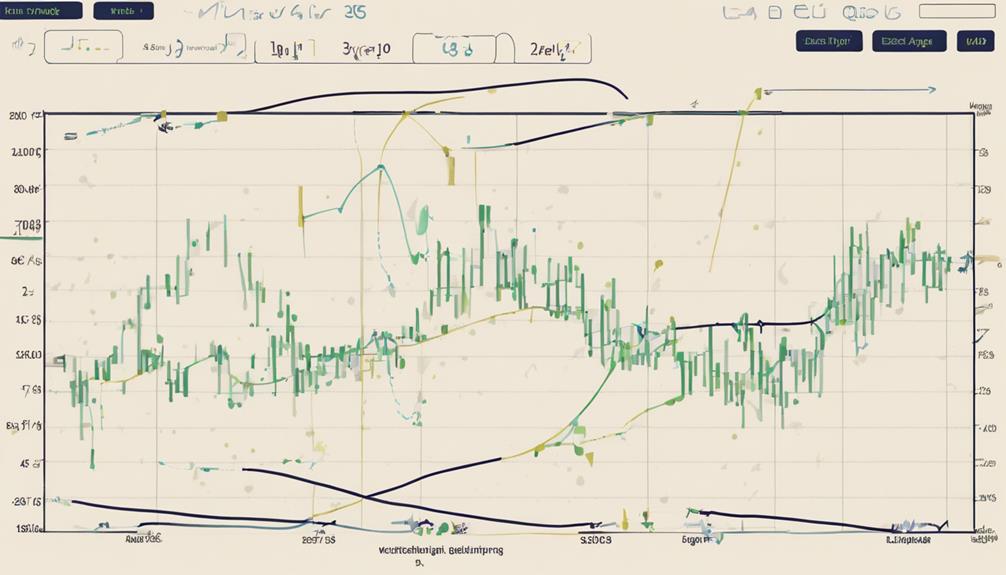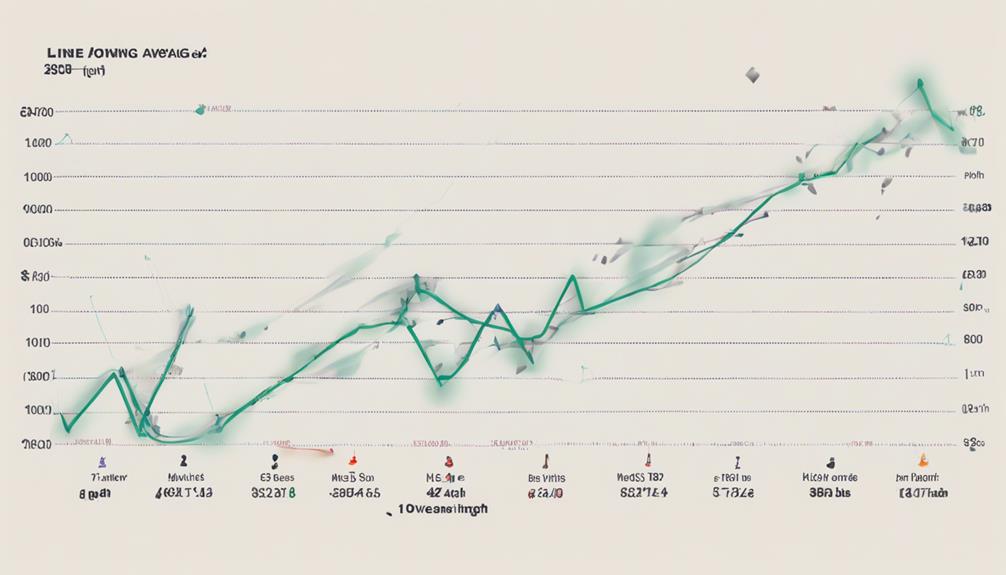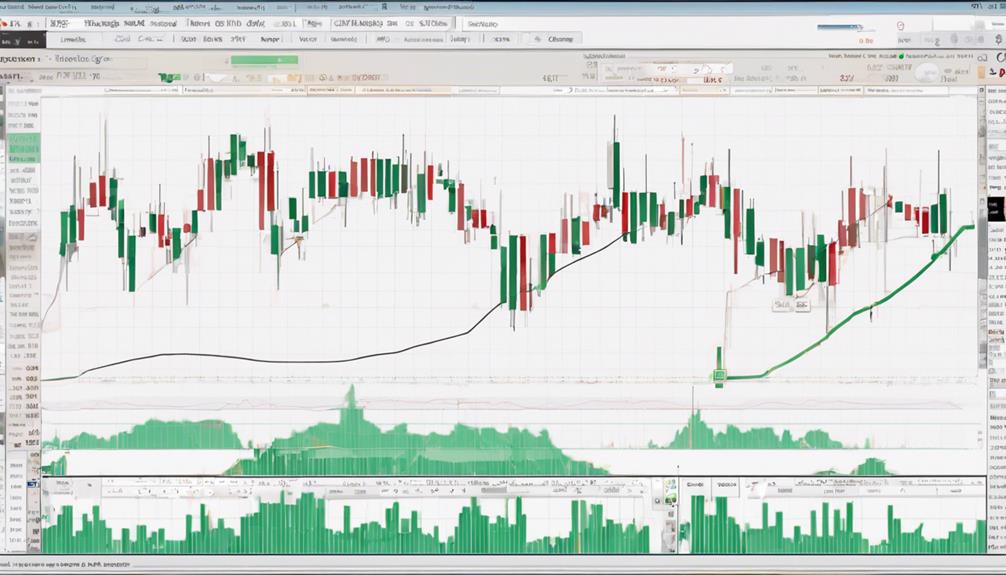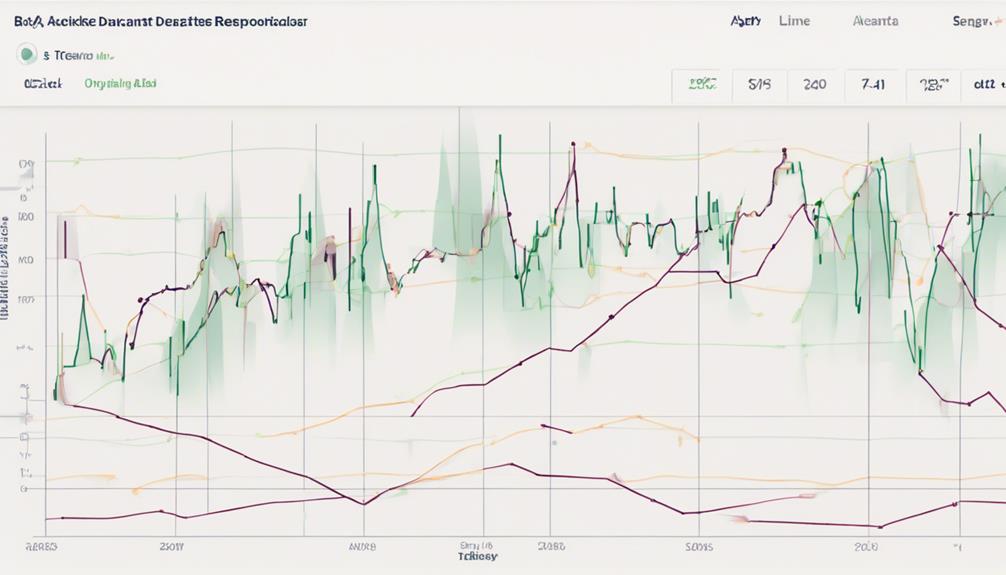As you navigate the world of trading, one tool stands out as a steadfast companion: moving averages. Intriguingly simple yet powerfully effective, these indicators hold the key to unlocking market trends and potential opportunities.
But how can you truly harness their potential to optimize your trading decisions? Let's explore some top tips that will elevate your understanding and utilization of moving averages, propelling you towards a more informed and strategic approach in the dynamic realm of trading.
Importance of Moving Averages
Moving averages play a crucial role in smoothing out price fluctuations and identifying trends in the market. Traders utilize these averages to pinpoint potential support and resistance levels, aiding in decision-making processes.
By analyzing moving average cross-overs, traders can gauge shifts in market sentiment and potential trend reversals. This technical analysis indicator is instrumental in formulating effective trading strategies across various time frames.
Combining moving averages with other indicators enhances the depth of market analysis, providing a more comprehensive view for traders. The simplicity yet effectiveness of moving averages make them a staple tool in the realm of trading, offering valuable insights into market dynamics and assisting traders in navigating the complexities of the financial markets.
Selecting the Right Moving Average Type

When deciding between Exponential Moving Averages (EMAs) and Simple Moving Averages (SMAs) for your trading strategy, consider your preference for speed of reaction and weighting of recent data.
EMAs, by giving more weight to recent data points, react faster to price changes and are more responsive to current market conditions compared to SMAs. Traders seeking early signals and swift trend changes often favor EMAs for their ability to adapt quickly to market dynamics.
On the other hand, SMAs, calculated by averaging closing prices over a specific period, provide a more stable view but are slower to reflect price movements. Your choice between EMA and SMA should align with your trading style and how you prioritize the speed of reaction and the importance of recent data weighting.
Optimal Length for Moving Averages

Consider the optimal length for your moving averages based on your trading style and desired time frame. Popular moving averages like the 10-day, 20-day, 50-day, 100-day, and 200-day periods offer different advantages.
Shorter averages react quickly, providing timely signals but may result in more noise. On the other hand, longer averages offer smoother trends but respond slower to price changes.
Depending on whether you're a swing trader or a day trader, using moving averages like the 20/21, 50, 100, 200/250 for swing trading and 9/10, 21, 50 for day trading can be beneficial.
Experiment with various lengths on your chart to identify potential support and resistance levels effectively.
Implementing Crossover Strategies

To effectively implement crossover strategies in your trading approach, understanding the dynamics of moving averages is crucial. Moving averages work by smoothing out price action, making it easier to identify trends.
Exponential moving averages give more weight to recent closing prices, offering a faster response to changes. The Golden Cross, where a short-term average crosses above a long-term one, suggests a bullish trend, while the Death Cross, the opposite, indicates a bearish trend.
These crossovers can signal potential entry and exit points for trades, especially in trend continuation or swing trading strategies. By combining crossovers with other technical indicators, you can enhance the reliability of your trading signals and improve your overall trading strategies.
What Are the Most Effective Ways to Use Moving Averages in Trading?
When it comes to trading, there are various calculate moving averages methods you can use to improve your strategy. Some of the most effective ways include the simple moving average, exponential moving average, and moving average convergence divergence. These methods can help identify trends and potential entry or exit points in the market.
Managing Drawbacks of Moving Averages

Managing the drawbacks of moving averages requires a keen awareness of their historical nature and potential limitations in predicting future price movements accurately. While widely used and popular, moving averages come with certain limitations that traders must navigate effectively. Here are some key points to consider:
- Moving averages can produce false signals during choppy price action.
- They tend to perform better in a trending market compared to sideways or ranging markets.
- Adjusting the time frame of moving averages can help address some of their drawbacks temporarily.
Which Calculation Method for Moving Averages Is Most Effective for Utilization?
When it comes to calculating moving averages methods, the Exponential Moving Average (EMA) is often considered the most effective for utilization. Unlike the Simple Moving Average (SMA), EMA gives more weight to recent data, making it a popular choice for traders and analysts in financial markets.
Frequently Asked Questions
What Is the Best Strategy With Moving Average?
For the best strategy with moving averages, combine short-term and long-term averages for trend confirmation. Enhance signals by using them with other indicators. Optimize by adjusting time frames based on your trading style.
What Is the 5 10 20 EMA Strategy?
In the 5 10 20 EMA strategy, utilize Exponential Moving Averages with 5, 10, and 20-day periods. This method swiftly identifies short-term trends by responding promptly to price shifts. The 5 EMA triggers quick signals, the 10 EMA adds stability, and the 20 EMA confirms trends.
What Is the 5 8 13 21 EMA Strategy?
In the 5 8 13 21 EMA strategy, the 5 EMA responds swiftly to price shifts, succeeded by the 8, 13, and 21 EMAs to confirm trends. Traders rely on this method for intraday trades, pinpointing entry and exit levels efficiently.
How Do You Master Moving Averages?
To master moving averages, start by understanding their types and characteristics. Practice trend identification with moving averages as filters. Experiment with different lengths like 20, 50, and 200 days. Combine them with other indicators for comprehensive analysis and adapt over time.
Conclusion
In conclusion, mastering the art of utilizing moving averages effectively can significantly enhance your trading success.
By carefully selecting the right moving average type, determining the optimal length, implementing crossover strategies, and managing drawbacks, you can navigate the market with confidence and precision.
Embrace the power of moving averages as a valuable tool in your trading arsenal, and watch as your strategies flourish with insight and data-driven precision.
